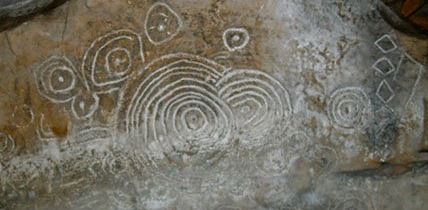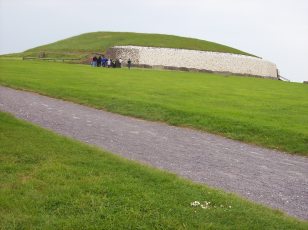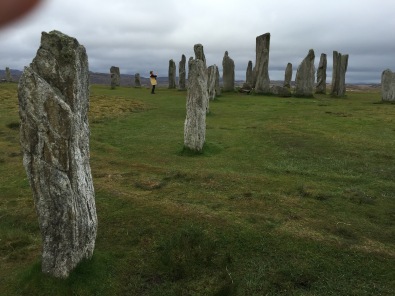
Almost a week ago now the hubs and I realized that with our combined “underlying medical conditions” and age vulnerabilities we probably needed to self-isolate (my doctor agreed), and it wasn’t long before we realized we had close contact with someone else who had to quarantine, having been in close contact with a person who was diagnosed positive. Now at the end of this week, pretty much everyone we know is working from home, and with their churches, schools and any other social groups closed down for the indefinite future, they’re wondering what besides toilet paper will become the new hard-to-get item, and pretty much everyone has made a vow to get those things done around the house that always fall to the bottom of the list (I wonder how long that will last!).
But as we just try to protect ourselves from contagion, so many others are suffering mightily under this wretched virus, and families in the hardest hit areas struggle for their lives, as medical personnel do so much they themselves perish in the struggle to try to compensate for our unpreparedness for a pandemic. We watch, wait, and listen for how best to respond, but the fact remains that so far, we, my husband and I, are living a life only different from non-pandemic times because we are not going out at all. We are blessed, so far.
Some feeling the social isolation pinch right now are the Irish musicians, because this is the annual 2 weeks around St. Patrick’s Day that are the hottest time for gigs in the whole year–and this mainstay has gone up in smoke. Yup, almost all of those gigs and celebrations are canceled as well. Texting around this morning it’s clear that people are still gonna celebrate—from home. And quietly. And alone–or mostly alone. For us, it means getting out all our “Full Irish Breakfast” supplies from the freezer, making hot scones, and uncapping the Bailey’s to put in our coffee. My hubs, the best Grampa on earth, has been writing down tunes all morning for our eldest granddaughter, who loves playing music with us. Later, we’ll get out our own instruments and run some of the ones we love. We miss our granddaughters, so the 15 year old showed me how to sign up for an app that lets me FaceTime her on her phone. She walked us through everything they’ve been doing today and yesterday: she made an acrylic painting of a nebula, and her 8 year old sister made an amazing Leprechaun trap. The littl’un thinks she caught one, because there was a bite out of the sugar cookie she put in there, and whatever did it left some “green spit” on it according to her!

So, we got St. Patrick’s Day covered!
One of the things I’ve been doing this past week in isolation is really trying to finish up scanning the VERY last box of photos I inherited from my Dad when he went into a nursing home. It was another box with a random mix of close to 1,000 photos from 1890 to 2010 or so—whenever it was that my Mom and Dad stopped taking pictures. My Mom passed away in 2012 and my Dad in June 2019.

It’s been an interesting treasure hunt, this project. I have sudden insights into my family tree, and so I make regular forays into my Ancestry.com account to investigate hints and put up pictures and documents. I’ve known since I was a child that I had “a lot” of Scottish and Irish “in my blood” but it’s taken me into my 66th year to figure out just how much! And I keep finding more.
My Dad and his mother always talked about our family being German. But in fact, my Mom’s side is all Celtic Nations, particularly Ireland, and a good jot of Scandinavian (a big percentage of all Celtic nations DNA!). I always called myself a “UK mutt” and I think that’s apt. Even on my Dad’s side technically we are Danish, as my Dad’s grandfather came from Schleswig-Holstein at a time it was part of Denmark—which as far as I can tell, it was—for the majority of history except for the last 100 or so years. (I know when I uploaded my surname for a research group seeking to align DNA with surname travels, it was categorized as a Danish surname.) My Dad’s mother’s side identified as German, but even so, her maternal grandfather came to Canada from County Antrim, Ireland.

People did not emigrate out of Ireland just for the hell of it. They came because of famine, poverty, and pestilence, and when they got to this side of the pond, they often struggled with even more. Just last night in following leads on a somewhat mysterious great great grandmother, I see from a few documents that she may very well have come from Dublin originally—but emigrated to the United States at a time when hiding your Irish ancestry was de rigueur to finding a happy home here. In her case, I may have been thrown off for a long time in trying to find her because her daughter-in-law’s mother listed this grandmother’s birthplace as Massachusetts on the headstone she bought the family—a headstone which seems to obfuscate other origins as well–but that’s another story. May an outcome of the pandemic we are now experiencing be to make people a lot more compassionate towards those who flee their countries of origin in the face disease, hunger, and warfare, and then endure the kind of prejudice and hardship thrust upon them that the Irish and others did, and do, upon coming to the United States.
Ancestor hunting is always a challenge, because so much of what we do in our lives, we do for love. We stay away from our families if we think we might be a threat to their health, or we throw contagion-caution to the winds and cling to them mightily under the same circumstances because we cannot bear the thought of them suffering alone. We take our children and flee the land of our birth because we love our children and want them to survive, and then, we cover up the proud lands of their origin because we love them and want them to survive.
I really like this “Irish proverb” I ran across:
A family of Irish
will argue and fight
But let a shout
come from without
And see them all unite!!

Happy St. Patrick’s Day 2020!
Let’s argue and fight if we have to, as long as we unite against this awful scourge and come out of it together! (home-made scones help!)































